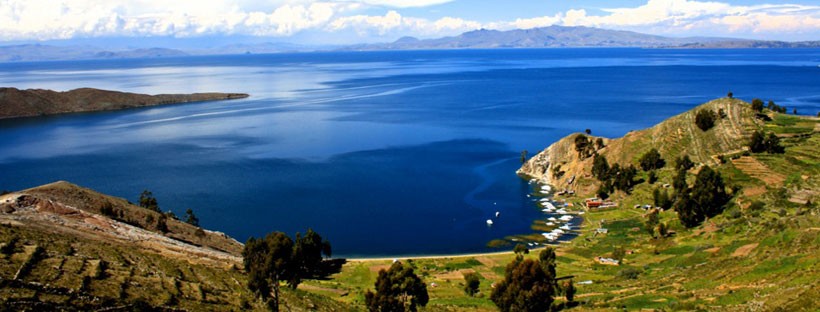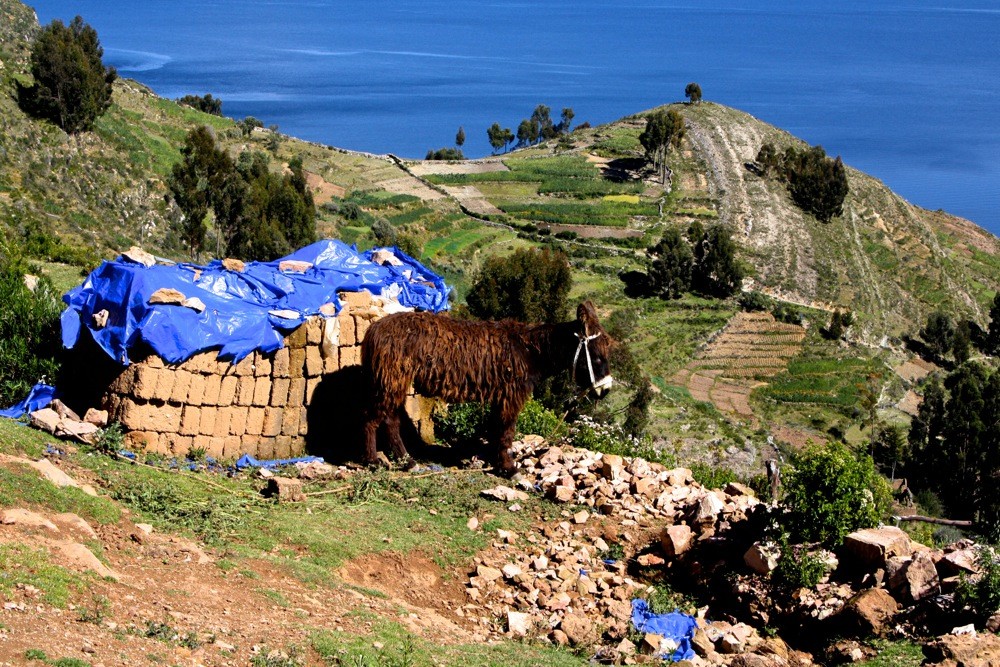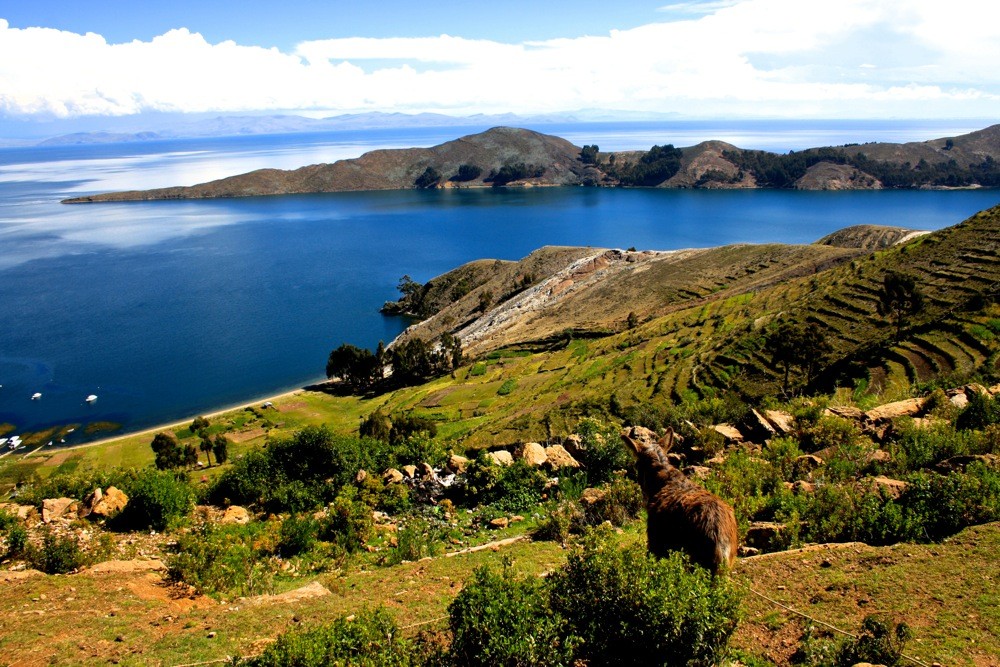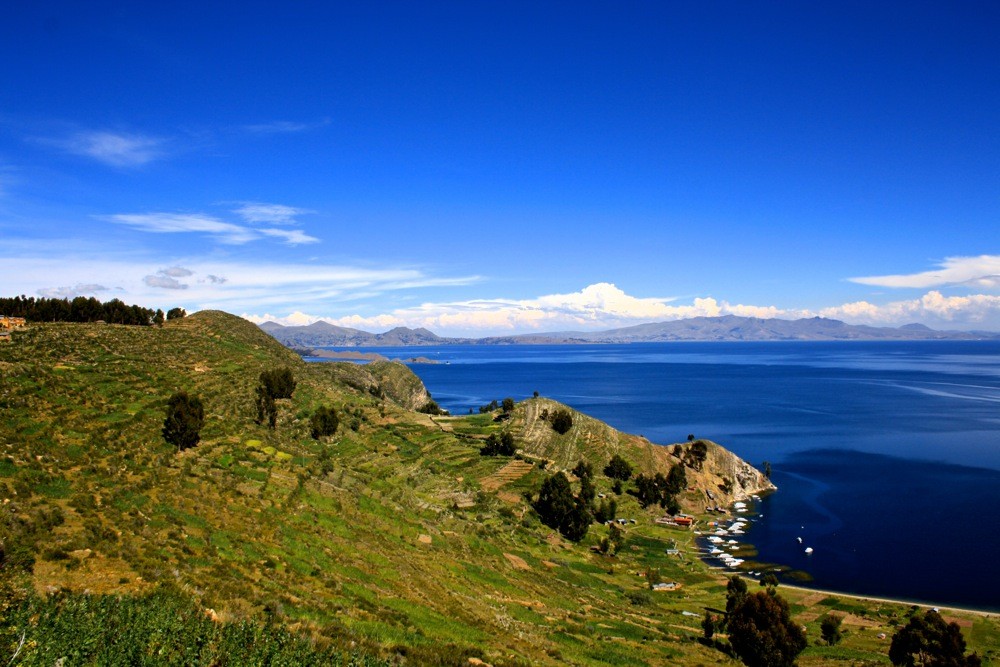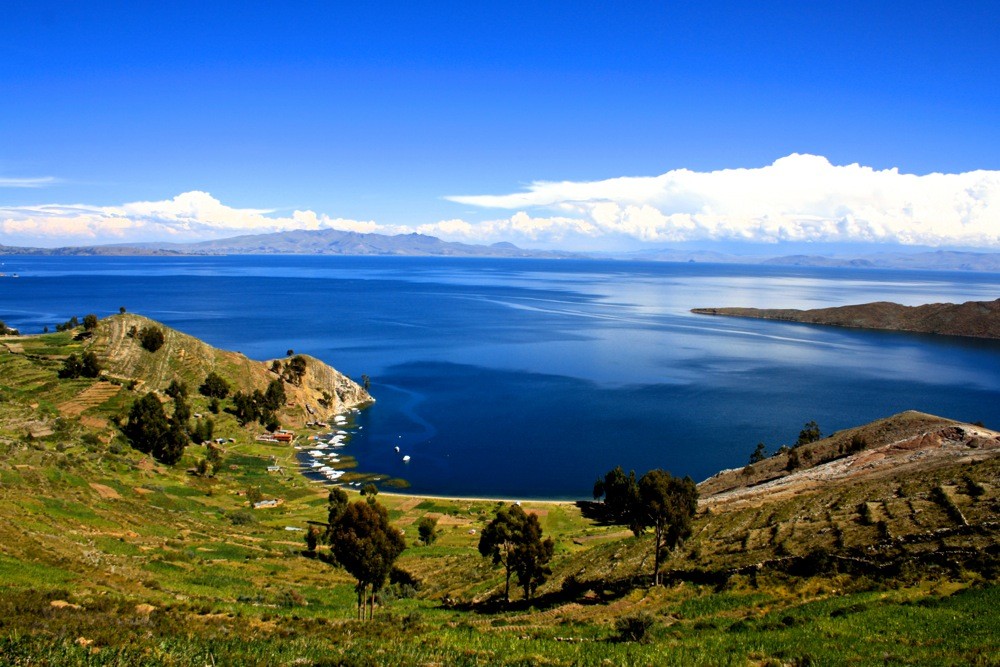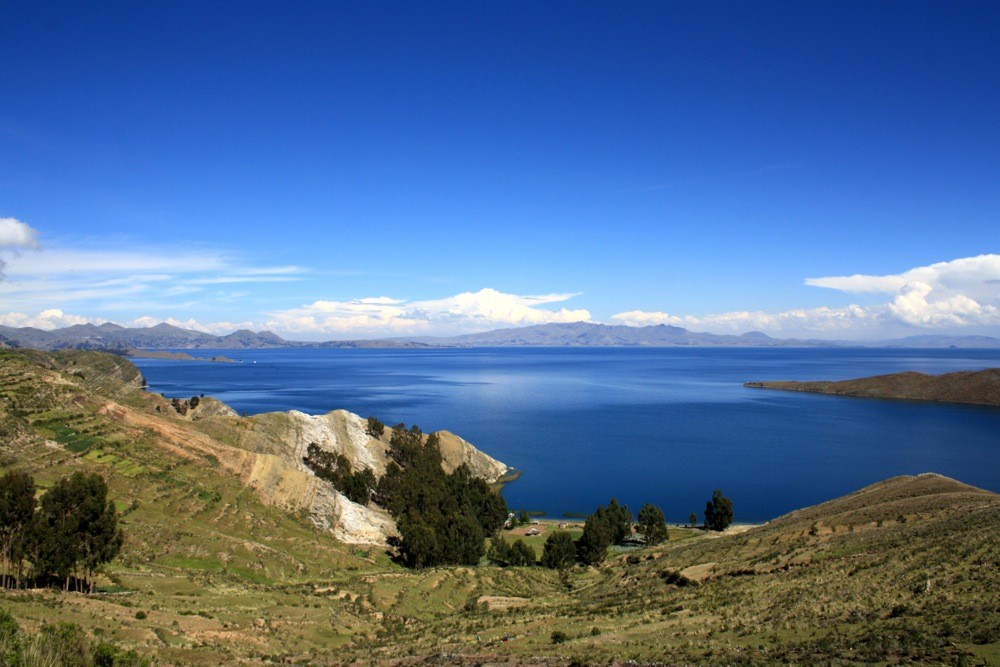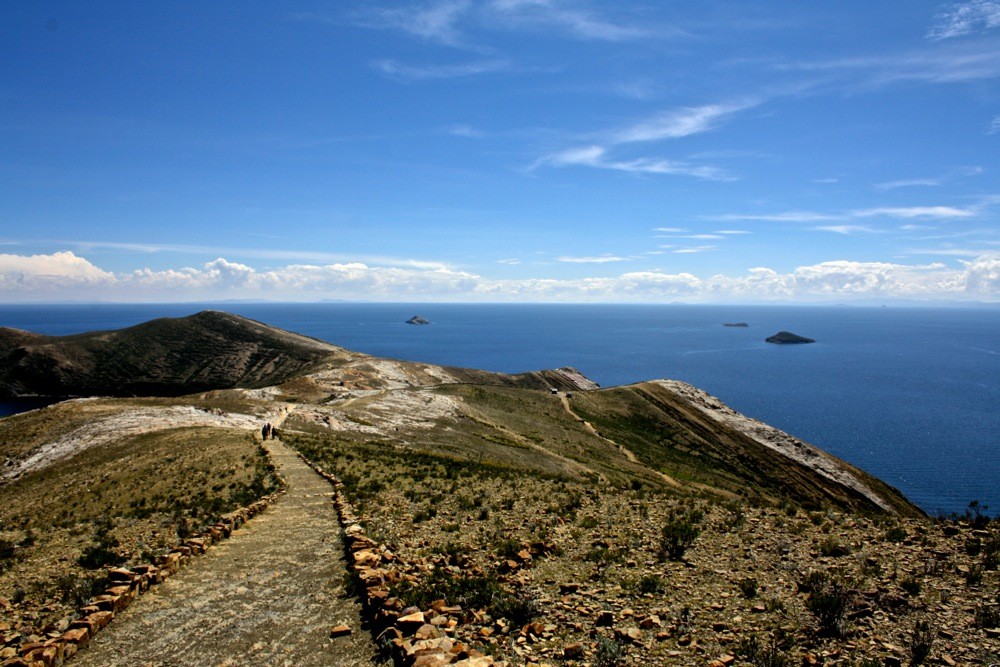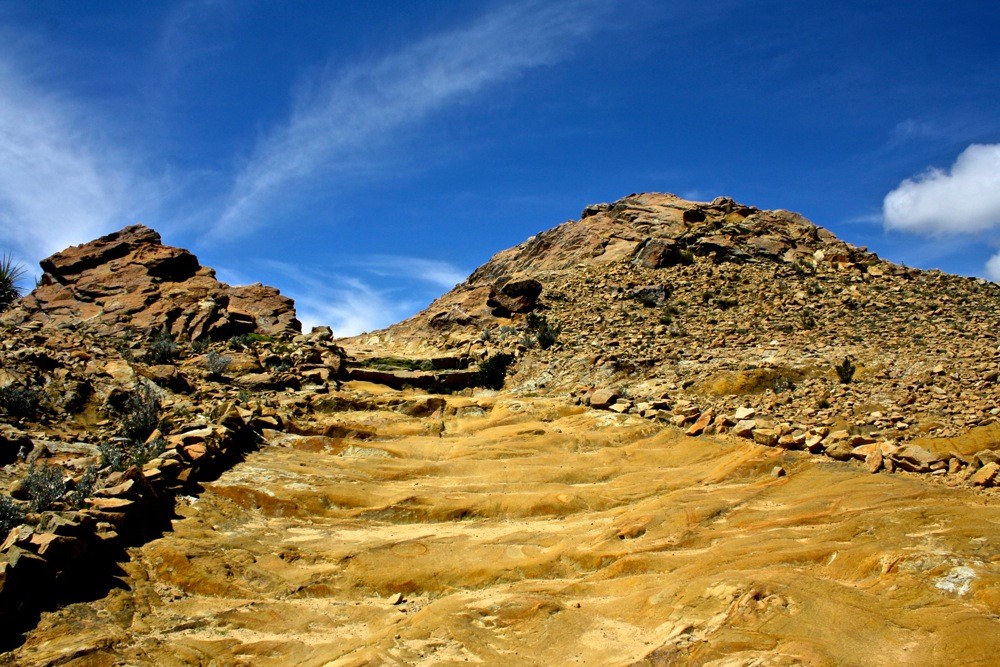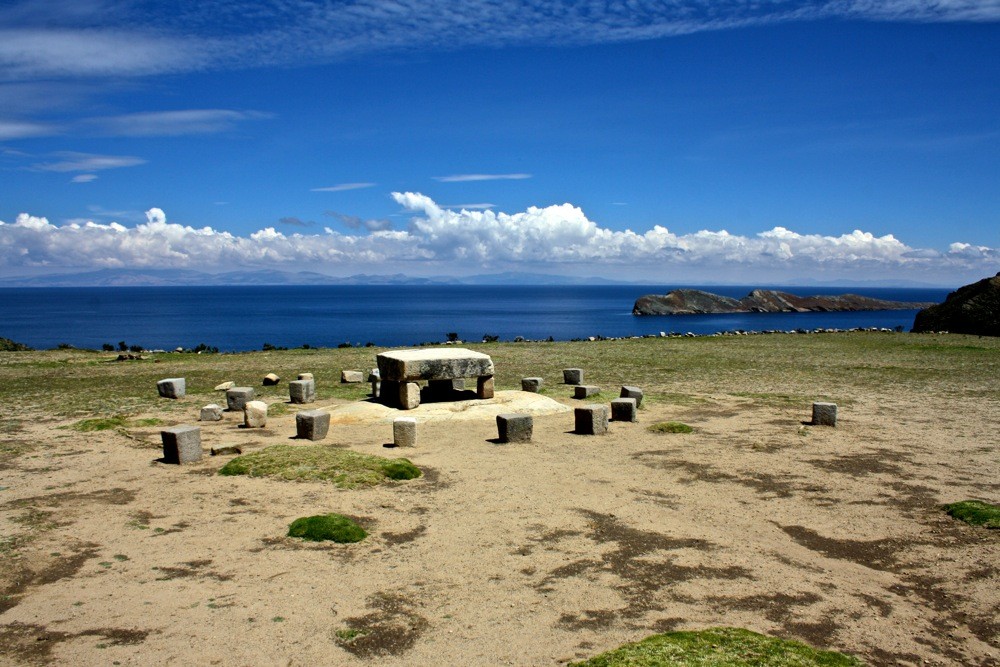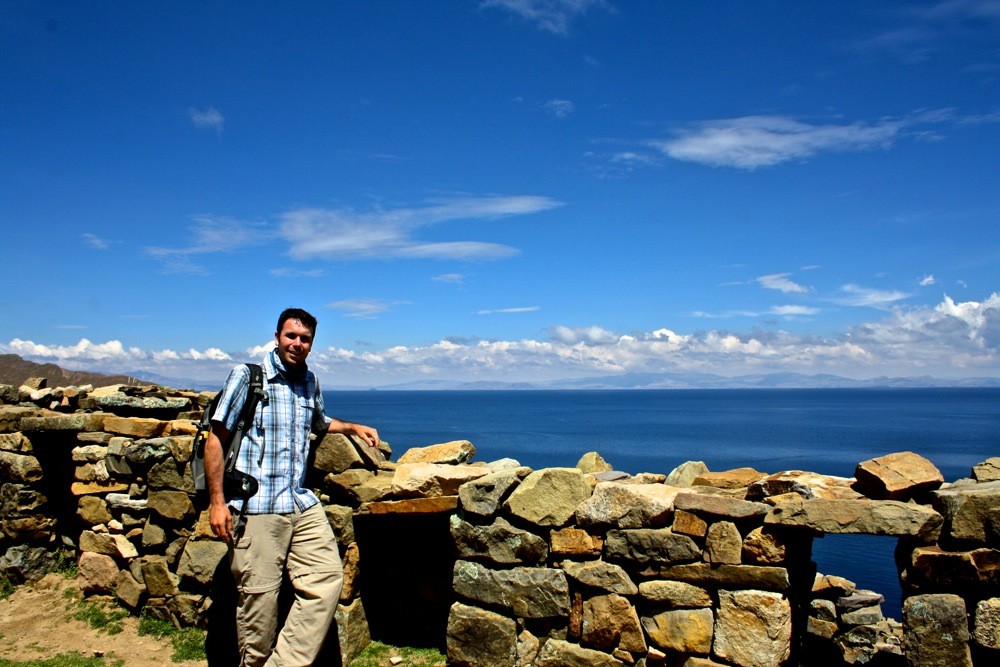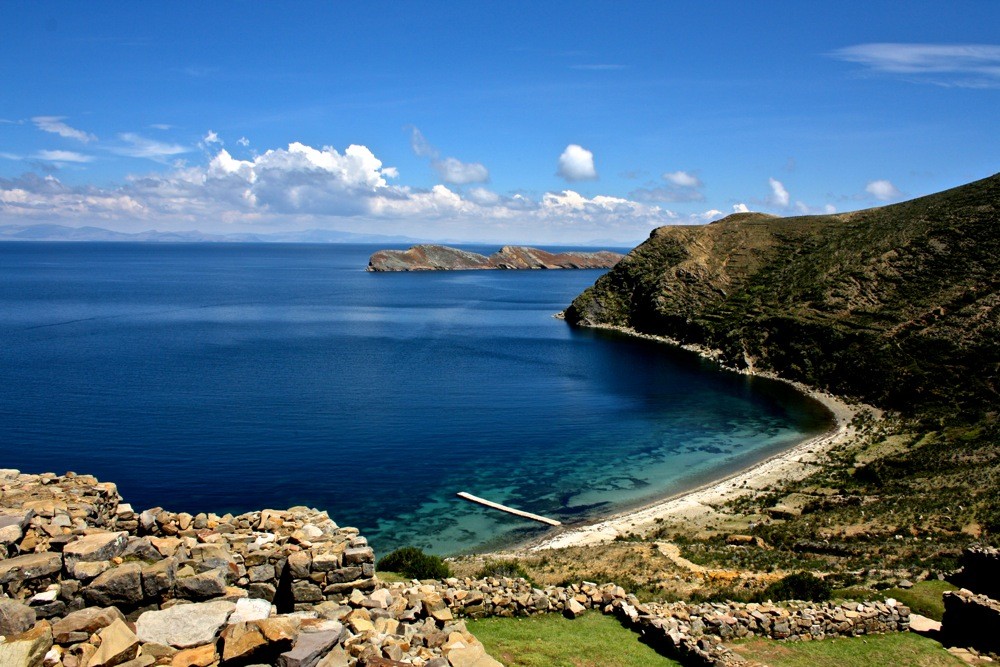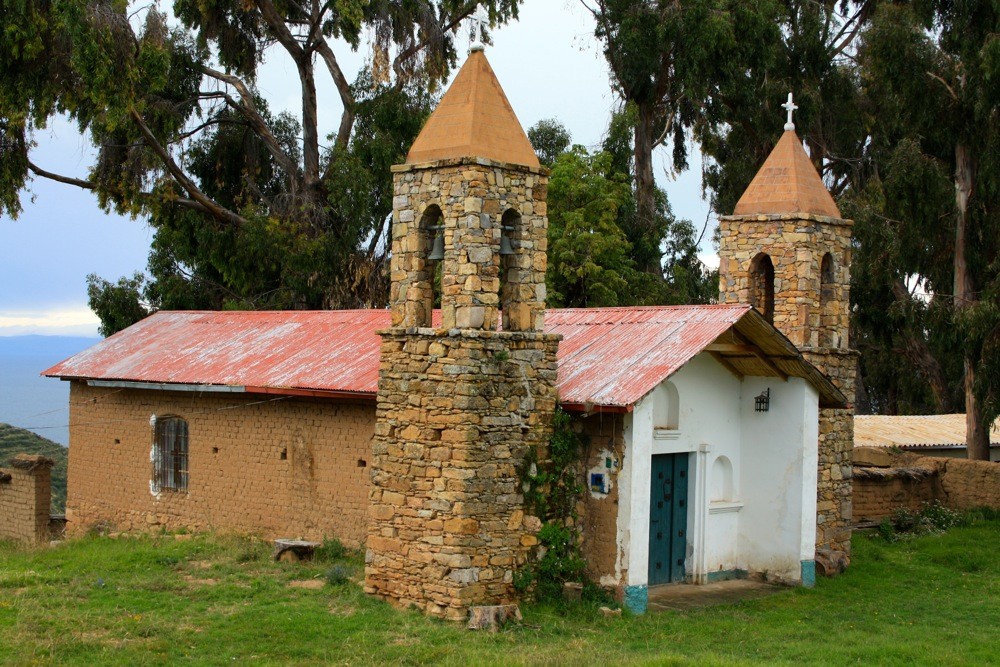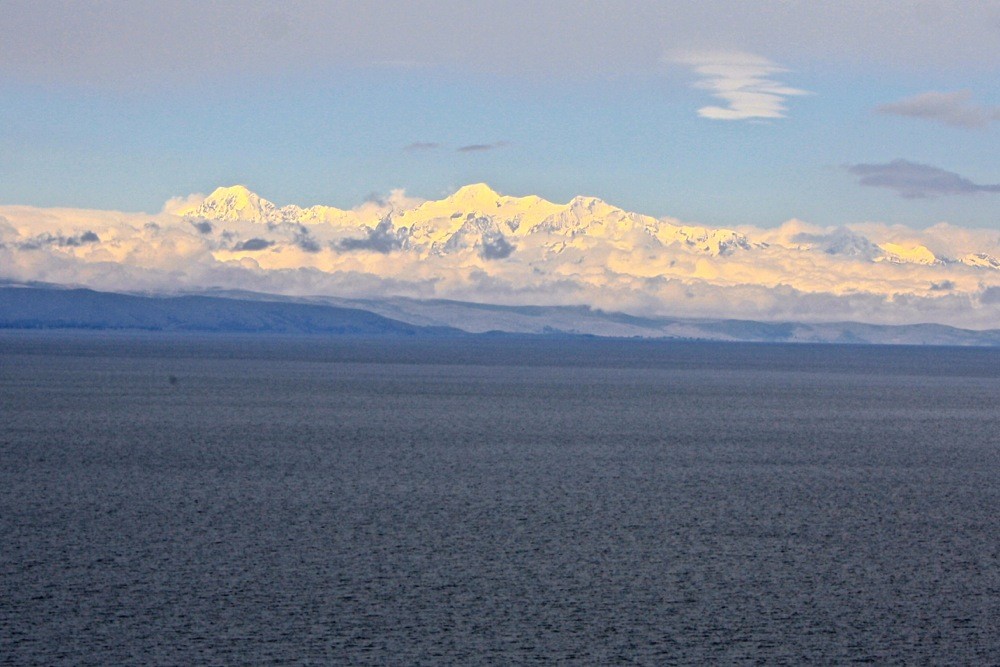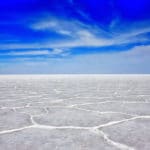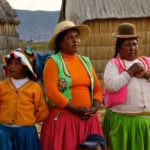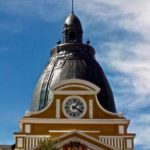If your trip to Bolivia is anything like ours, you’ll need a place to catch your breath and reset. Visiting Isla Del Sol is the perfect answer
Like most round-the-world trips, ours has not been a big yellow ball of shining happiness but rather a gradient of colours. At one end lie vivid and soaring reds: the Mount Yasurs and Salar de Uyunis of the trip. At the other end are greys and browns: the 32-hour bus journey from Guayaquil to Lima, the insurance claim for ruined electronics. And in the middle are large swathes of greens and blues: the days that aren’t breathtaking or life affirming, but pleasant and fun nonetheless.
Our visit to Isla Del Sol in Bolivia was (if I can stress the metaphor) firmly in the green-blue: not unmissable but certainly worth a visit. This mythical birthplace of the Sun God lies on the Bolivian side of Lake Titicaca and is home to a collection of 80 ruins and a small population of 800 families. It provides a calm we found to be rare in mainland South America and despite the odd hiccup, we left refreshed and ready once again for Bolivia’s many vagaries. Here are our tips to help you do the same.
1. Be aware of the north/south divide
It’s likely that your hostel will be located in either Yumani to the south or Challapampa to the north. Make sure your ticket for the boat transfer includes a stop at the correct end of the island. We booked a hostel in the south and very nearly bought a ticket valid only for the north. There are no vehicles on the island so it would have been very tricky to get across.
Additionally, be very clear with the crew where you need to go and be proactive about checking where you’ve stopped. Our boat docked in Yumani for mere seconds and pulled away with no announcements. We had to rush outside to check our location and have the boat turn around and return to shore.
Atlas & BOots
2. Take motion sickness pills
Our journey to Isla del Sol was slow and rough. Our journey back, even slower and rougher. On top of that, there were petrol fumes heavy enough to jumble even sturdy stomachs. If you are prone to motion sickness, take a pre-emptive pill to keep it at bay.
3. Be aware of the steep hike on arrival
If possible, leave your big bags at a hostel on the mainland and take only what you need for a two-night stay. There are no vehicles on the island and depending on your hostel’s location, you may be faced with a long, steep hike (especially at Yumani). Isla del Sol is at 3,800m at the base and 4,100m at the peak so you will also have altitude to deal with. Peter’s been travelling with 20kg on his back, so couldn’t carry my bag on top. If it hadn’t been for the help of a local boy, I wouldn’t have made it to our hostel.
4. Keep change for ‘toll fees’
You have to pay 15 bolivianos ($2.15) to enter the island community. There is no official station at which to do so, so you’ll likely pay a seemingly random stranger on the boardwalk. Make sure you get a ticket/receipt as proof of payment as you will need it on the cross-island walk (which we highly recommend). If you do the walk, take your ticket as well as an extra 15 bolivianos which you will have to pay at the toll point for the second community on the island. If you are coming back (as opposed to leaving the island from the other side), just show your tickets at the toll points. It’s also worth keeping some loose change for bathroom breaks.
5. Manage your expectations of the ruins
Isla del Sol has 80 ruins, most of which date back to Incan times. It’s definitely worth visiting some of these (see ‘Essentials’ below), but be warned that they’re not the grandest you’ll ever see, especially if you’ve come from Peru. Approach Isla del Sol as a chance to relax, do some hiking and take in some beautiful views of Lake Titicaca and the Andes.
6. Be prepared for the cold
Cold showers. Cold hostels. Cold restaurants.
Okay, maybe that’s unfair. We did get one hot shower before the piping gave way. In all other countries, we’ve been able to temper a cold shower with some sun, coffee in a warm restaurant, or curling up in a cosy bed. In much of Bolivia, however, we were cold for days nonstop and Isla del Sol was no exception. Be warned that it won’t be warm just because it’s South America.
The Essentials
What: Two-nights visiting Isla Del Sol, Bolivia, perfect for hiking and relaxing. In terms of Inca ruins, consider visiting the Rock of the Puma, the Inca Table and the Footsteps of the Sun in the north, and the Inca Steps and the Fountain of Youth in the south.
Where: Isla del Sol, Lake Titicaca, Bolivia. We stayed at Hotel Imperio del Sol. While our room was comfortable with a great view, we felt $35 USD per night was too high for the very basic amenities (toilet with a broken flush!). We’ve heard good things about Hostal Jacha Inti but be warned that the standard across the island may be lower than prices might indicate.
When: The best time to visit the Lake Titicaca area is during the dry season from May to September. The average temperatures range from 16 to 17°C (60 to 63°F).
How: Take a boat from Copacabana to Isla del Sol. Boats leave at 8.30am and 1.30pm and cost 30 bolivianos ($4.30) there and 20 bolivianos back ($2.15). Tickets can be bought from agencies along the main thoroughfare. You can buy a round-trip for 40 bolivianos ($5.80) if you are returning on the same day, but we recommend staying for a couple of nights.
Make sure your ticket goes to the correct port (Yumani in the south or Challapampa in the north depending on your accommodation) and make it clear to the crew where you need to disembark.
If you’re planning on doing some hiking it’s definitely worth taking a map with you. National Geographic’s Adventure Map of Bolivia covers Isla del Sol along with the rest of the country. The map is printed on durable synthetic paper which is waterproof and tear-resistant – ideal for withstanding the rigours of international travel.
Bolivia’s only international airport is in La Paz. Book flights via skyscanner.net.
The Lonely Planet Guide to Bolivia covers Isla del Sol in detail as well as how to visit the world’s largest salt flat, trekking in the Cordillera Real and the intense city of La Paz.
